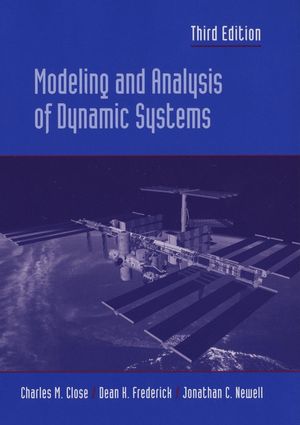|
Textbook
Modeling and Analysis of Dynamic Systems, 3rd EditionISBN: 978-0-471-39442-6
Paperback
592 pages
August 2001, ©2002
 |
||||||
- Computer methods using MATLAB and Simulink are introduced in a completely new Chapter 4 and used throughout the rest of the book. Although the new edition can still be used without detailed computer work, the inclusion of such methods enhances the understanding of important concepts, permits more interesting examples, allows the early use of computer projects, and prepares the students for real-life work.
- The Laplace transform method is used earlier for the analytical solution of linear models, starting in Chapters 7 and 8, rather than being preceded by a lengthy discussion of classical time-domain techniques (which are now relegated to an appendix). The authors illustrate major concepts (such as transient, steady-state, zero-state, and zero-input responses; step, impulse, and ramp responses; time constants, damping ratio, and undamped natural frequency; and complex-plane plots) in the context of Laplace transform solutions. There is also a heightened emphasis on the central role of the transfer function, as a unifying theme for system properties and responses. Section 6.1 of the second edition was moved to the Appendix in this edition. The remaining material in chapter 6 was combined into the rebuilt Chapters 7 and 8.
- The material leading to the analysis and design of feedback systems in Chapters 13, 14, and 15 has been reorganized around the use of computer tools. The block diagrams of Chapter 13 lead to the computer tools introduced in Chapter 14. These tools are then used in Chapter 15 to show design methods for control systems. The authors point out where design choices are required and show how to use these tools to help make such choices.
- The authors have removed material that instructors did not often use and have streamlined some of the other treatments. An example is the elimination of the detailed pencil-and-paper solutions of matrix equations. At the same time, they have added material, such as a new appendix on complex algebra, where some students may be weak.



